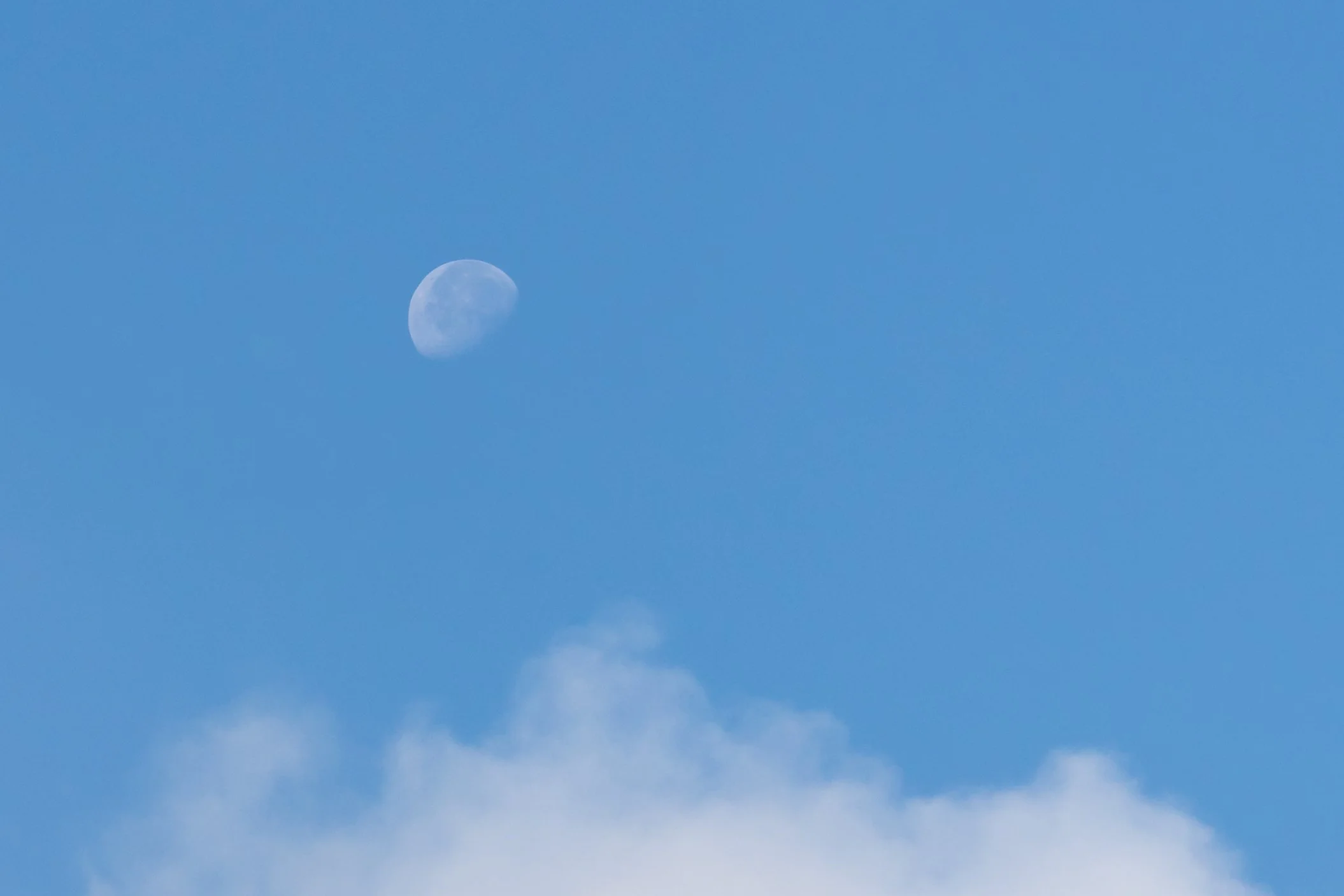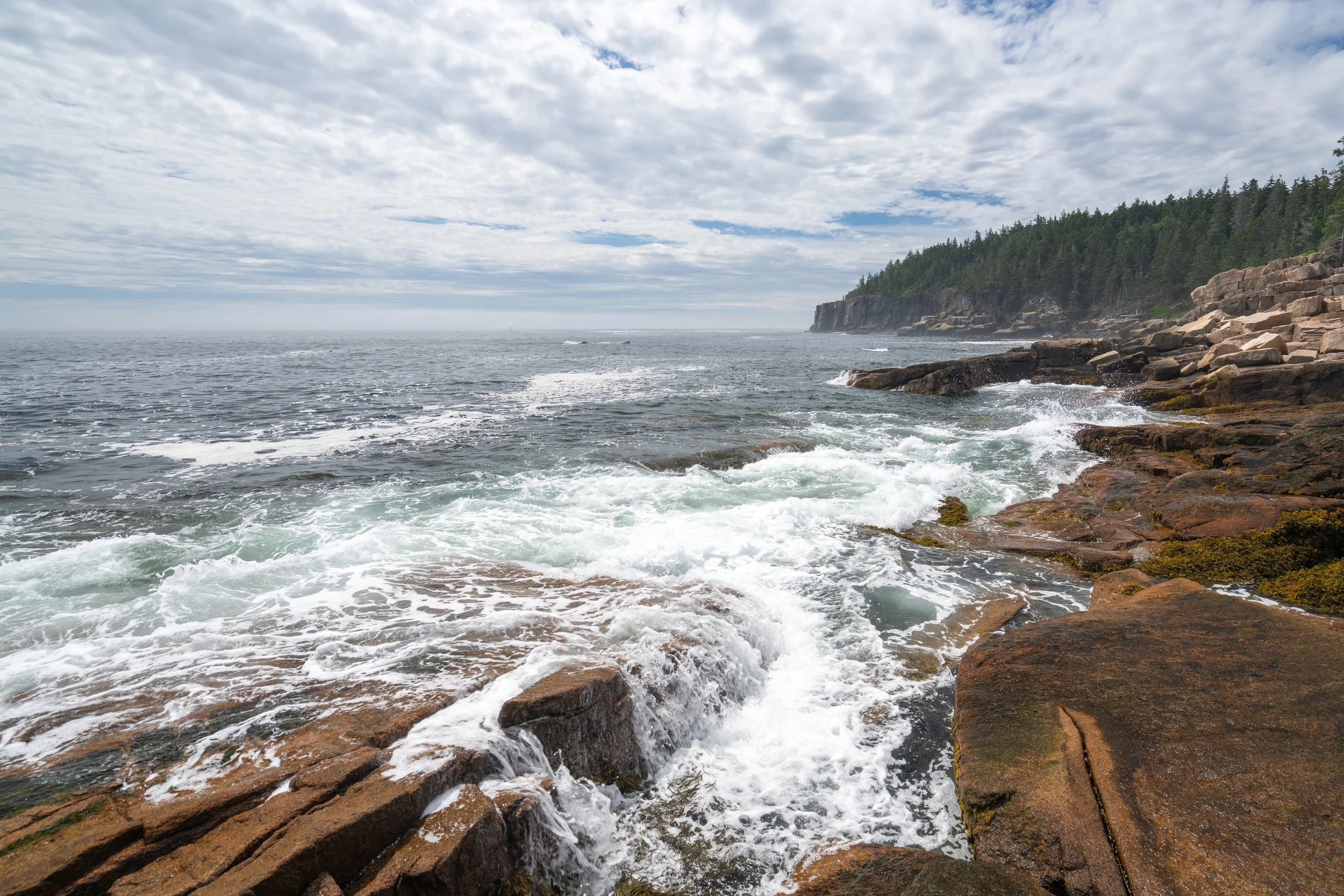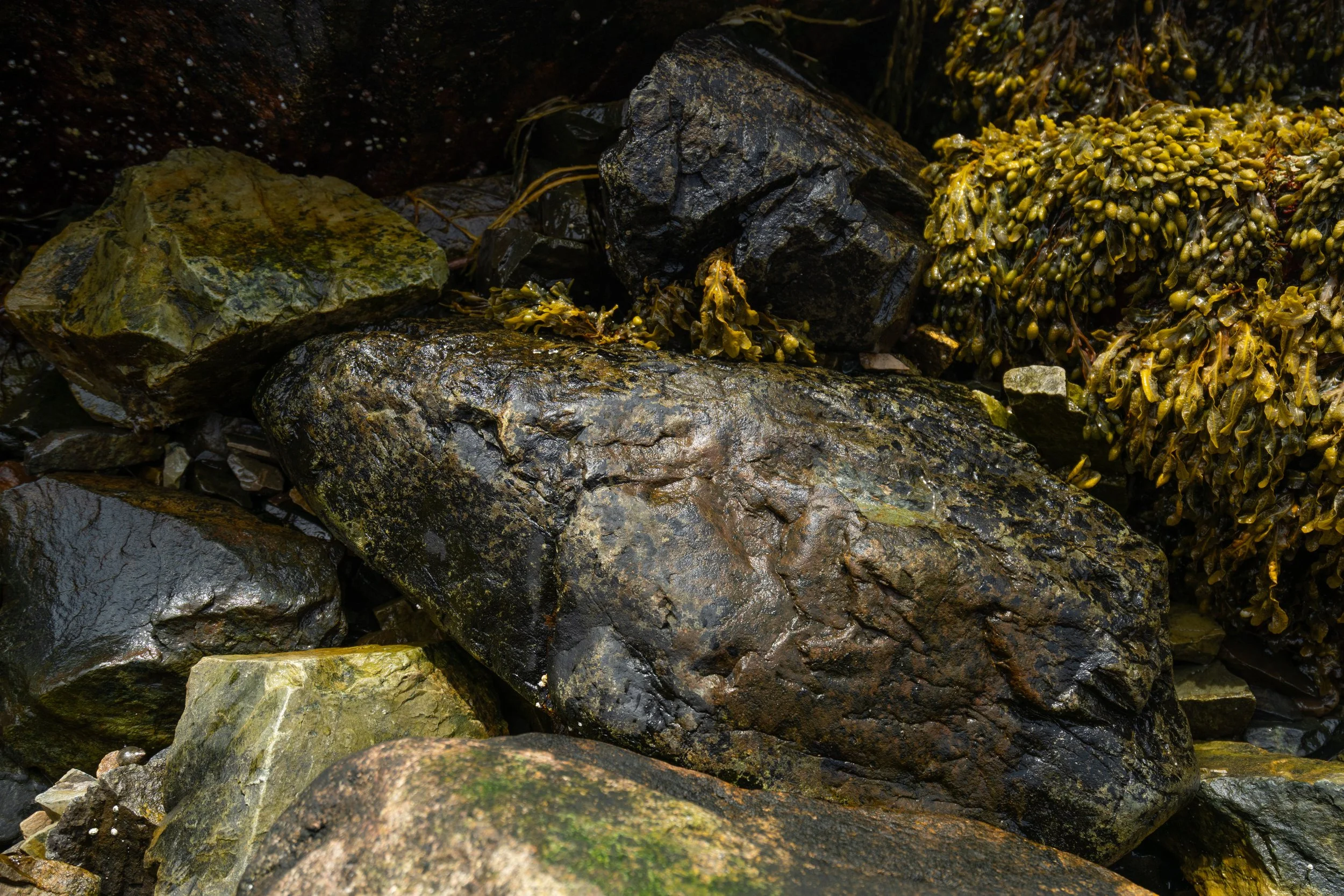The first thing we need to understand is how the moon and sun affect the tides.
The gravity of both the sun and moon pull on the Earth, creating a bulge. This bulge is what forms our tides. It can actually be measured on land as well, but is much less noticeable. roughly every 6 hours the tides will cycle from low to high, so our goal is to match sunrise and sunset with the high tide.
I personally try to line up peak high tide one hour before sunset. That way, I know I can lock into my composition without fear of my feet getting wet, or even worse, my camera! Salt water is our enemy, people!!! at least for our precious electronics.
So how can we know tides by simply looking at the moon?
here we see the moon in its waning gibbous phase. great time to hit the coast!
A general rule is that a full or new moon will have a low tide cycle associated with sunrise and sunset, so unless you're shooting astro or lining up a full moon shot, you’ll want to plan your seascape photography around a first or third quarter moon. the moon cycle is 29.5 days.
-New moon
-First quarter
-Full moon
-Third quarter
And just to complicate things a bit, because the Earth rotates faster than the moon orbits the Earth, there is a delay in the tides compared to the moon's alignment. So an Earth day is 24 hours, but a tidal day is 24 hours and 50 minutes.
Cool, so let’s not get too overwhelmed with being exact here! just look up at the sky. If its a half moon AKA ”quarter moon” you’re good to go!
Where I live in the Northeast, our tides have a 10-12 foot differential between low and high. This may be different in your area depending on factors like coastal geography and water depth. Because there are so many variables in determining these things, all of the information in this article should be used as a rough guideline, but the basic concept remains the same.
Here’s a series of photos taken from the same location. One is at high tide, and one at low tide.
As you can see, the difference is quite substantial!
At low tide, it is extremely difficult and dangerous to get down to the water. Most of the rocks will be covered in seaweed and a slick, dark layer of algae. Stay clear of these rocks; they are very slippery!
So now that we have an understanding of the tides, let’s talk about what other knowledge we can gain from understanding the moon cycle. Did you know that a full moon rises at the same time as the sun sets, and the new moon rises at sunrise? Pretty convenient for us photographers, nature’s gift to perfect lighting!
This happens because the moon is aligned directly on the lunar plane with Earth. That's why it appears full; it has direct light cast from behind our perspective here on Earth.
So with that information, we know the first and third quarter moon will rise at noon and midnight. All easily observable knowledge that we can keep in our back pocket.
Full moon rising off the coast of Massachusetts
Photography is one of those activities that helps us perceive the world in a unique way, igniting curiosity and creativity that keeps this beautiful planet that we all share so captivating!
In summary, if you’re planning a trip to the coast, take a look at the lunar calendar first. Determine what type of images you’d like to walk away with, and hope for those epic conditions!
Can’t wait to see your images!




